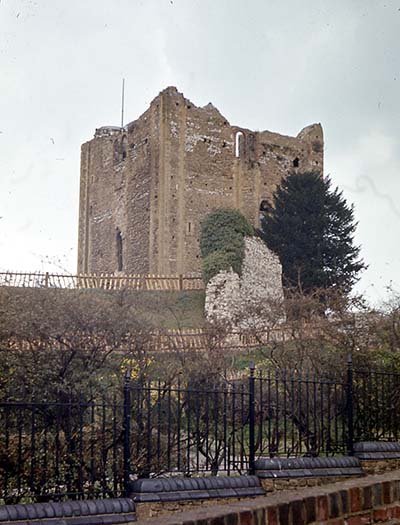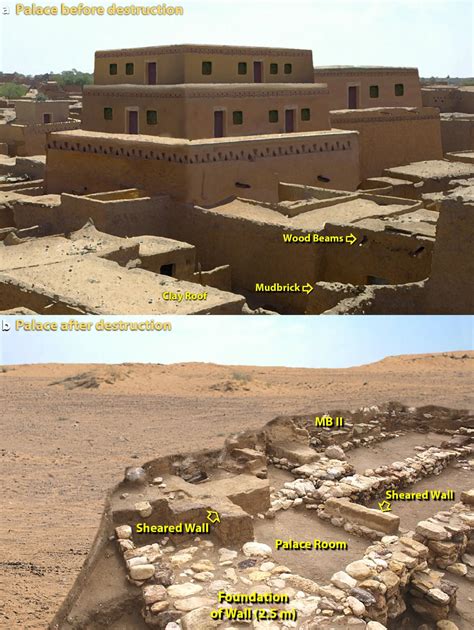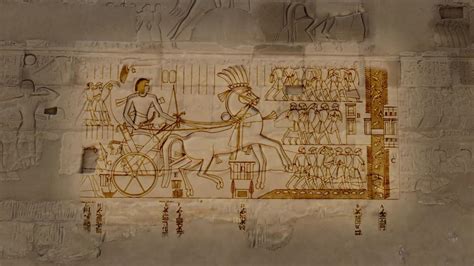As I get to the end of Mallory’s Morte d’Arthur I understand why it’s a great book rather than simply a collection of knightly names and tournaments. That won’t stop it getting banned once the woke censors finish with Dahl and Shakespeare and get round to spotting its sexism, Islamophobia, colonialism and gratuitous violence. But one thing it cannot be accused of is historical verisimilitude.
If we accept that the mediaeval Welsh chronicles and French romances Mallory used as sources have their origins in some dim memory of the time after the Roman Empire’s withdrawal when British chieftains resisted the Saxon encroachments, then that is indeed represented – just about – in Mallory. Particularly we see it in the section on the quest for the Holy Grail (or “Sangreal”) the period is overtly stated to be some 400 years after Christ, which of course fits the timing quite nicely. It’s a shame that the non-Christian enemies are Saracens, rather than Saxons!
But other than that, as I mentioned in a previous post, the thing is entirely anachronistic, from the chivalric code and the centrality of the joust, to the hegemony of the Pope threatening to interdict England if Arthur doesn’t sort out his dispute with Lancelot and Guinever. Even the gratifying mention of my own town, Guildford, as “Astolat” with its castle and pleasant gardens just like the reality of my childhood, is anachronistic, for the castle is Norman and the town itself late Saxon. And that’s fine, because the project was the retelling of a yarn for Mallory’s own 15th century ruling class, which was romantically attached to what, I suspect, was even then a rose-tinted view of what chivalry was once about.

Sometimes Mallory pays lip service to the past as a different country, for example by noting that love then was done differently from “nowadays,” but he doesn’t specify quite how it was different because, to be frank, he had no way of knowing.
The ironic thing is that, coming as we do from a far more literate and historically fastidious culture, and having read quite a lot of original material from before, during and after Mallory’s time over the years, I am still unable to say with any accuracy what in the book is drawn from contemporary 14th century life, and what looks back to Mallory’s relatively recent past.
For example, my impression is that the author has some idea that armour “back then” was less elaborate than that in his own time. So perhaps he is drawing accurately on descriptions in the romances that were, themselves, written a couple of centuries before. Or perhaps he is imagining how things would have been in that period. Or perhaps he is, against my impression, projecting 15th century military hardware back. The point is that I have little way of knowing, despite the Internet.
Now, were I a mediaeval scholar with time on my hands I could research the matter carefully in ancient libraries and archives. But even had he not been in prison, those resources were not available in Mallory’s time, or indeed in pretty well any other age before our own, not least because the focus of academic history has only relatively lately become governed by Enlightenment values of rigorous accuracy. Witness how archaeology, only a century or two ago, was about finding ancient treasures and fitting them into a legendary past of Druids and kings, whereas now we get excited about the phases of occupation of a humble homestead and sift the earth to determine the variety of grain eaten there.
Yet with all these modern advantages, verisimilitude is elusive even for the recent past. I have only to watch a drama set in the 1950s, but written by somebody born after that, to see that the ambience is all wrong. I was there. By contrast, I recently watched the 1955 film The Quatermass Experiment, in which Jack Warner (typecast as ever as a London policeman) interviews Professor Quatermass and says, “I’m not a scientist – I’m just a simple Bible man…” Can you imagine such a line in Call the Midwife, nuns notwithstanding? The ubiquity of faith has been forgotten in my own lifetime.
That brings me to the patriarchal narratives in Genesis, which are of a unique genre in ancient literature – a four-generation family saga of migration according to a promise given by their single covenant God, who is distinct from the pantheons of their Mesopotamian origin, their sojourn in Canaan, or their final destination (for 4 centuries) of Egypt.
What has emerged from archaeology over the last two centuries is how, overall, one can place the family in historical cultural setting by a whole range of correlations. Their names are like those found in the Ebla tablets, their movements as rich, Semitic, nomadic herdsmen are only plausible within a relatively small time-frame, and likewise their ability to relate to royalty in Egypt. The city-states and other political entities they interact with are impossible before or after a certain period, the idiosyncratic customs of marriage and so on belong in a certain time and place only. Even the forms of treaties help to pin things down.
One fly in the ointment, for the Bible-believing reader, has been that taking the patriarchal ages literally seems to place them in ahistorical settings, according to the archaeology. But even this may be turned on its head, because as Evangelical scholar Craig Olson demonstrates, it was common ANE practice to use exaggerated, and usually symbolically significant, ages for important figures. To put it another way, the truth is that at that time people weren’t interested in recording actual chronological ages at all – in the Bible it is only in the time of the monarchy that precise years are given (and even then it is only when we adjust for their cultural conventions that we get a good match against non-biblical information). The high ages of the Patriarchs, then, are evidence for the antiquity of the narratives.
All this information places all four generations within the first half of the 2nd millennium BC, and taking into account the exact political situation, I’ve long believed that Abraham was born around 1800BC, give or take a few decades. Taking the storylines seriously, but following Olson in putting the stated ages down to literary genre, we can get Joseph into Egypt at the very time when semitic Pharaohs had a palace in the Nile delta, and around 4 centuries can then comfortably elapse if we accept Kenneth Kitchen and James Hoffmeier in their detailed case for an Exodus is the reign of Pharaoh Rameses II.
In the last few years, I’ve become convinced, by the extraordinary excavations by Steven Collins at Tall el-Hammam, that the eastern alluvial plain of the Jordan is not only the site of the five cities of the plain, but that their destruction by, apparently, an asteroid airburst is just too coincidental not to match the destruction of Sodom and Gomorrah in Genesis. If we accept this, it pins down our chronology even more, because the destruction layer there has been radiologically dated to 1700BC ± 40 years, and according to Genesis Isaac was born a year after that event. That’s not bad dating for a character not otherwise recorded in secular history!
So far, I’m saying nothing that isn’t commonplace, to those who are interested in ancient history and believe the Bible to be trustworthy. But of course there are many who want to explain the patriarchal record by almost any other theory than that it is a patriarchal record. Take that Sodom episode, for example. I’ve heard it said that the genuine cosmic destruction of the Tall el-Hammam area is the “historical core” for which, much later in folk-memory, the role of God in the Abraham story became a fictional aetiological explanation.
But the destruction of Sodom is pretty well the only “miraculous” event in the whole narrative, if you don’t count angelic encounters, directions from God and so on, which are religious experiences known even now. Genesis isn’t interested in explaining wondrous events, and such an aetiological tale is simply out of place in what, actually, is quite a mundane and plausible account. But more than that, whilst past catastrophes are certainly remembered in primitive folklore, their historical setting, usually, is not. Since the whole population was wiped out, the Genesis account of Lot sitting in the gate of Sodom – which Collins says exactly matches what the archaeology has found – is either a unique eye-witness record of Sodom as a living city, or an extremely lucky fictional reconstruction, as is placing Abraham in the right place and time.
The patriarchal narrative as a whole has been explained away as a fictional origin story for the nation of Israel. But the earliest record of Israel is in the 12th century, after 400 years living in Egypt if we believe in the Exodus – it is simply impossible to retain historical verisimilitude for that long, as I found in my assessment of Mallory. If, following the various iterations of the Documentary Hypothesis, we place the invention of the story in monarchical or even post-exilic times, the absence of anachronism is, in itself, simply incredible.
True anachronisms in these chapters are rare exceptions, quite the reverse of Mallory where plausible history is the exception. The most obvious example is Abraham’s origin in “Ur of the Chaldeans,” but at worst we only need to posit a helpful minor editorial addition in later times for that. And there are sensible reasons for placing “Ur Kaśdim” somewhere else than the best known “Ur”, perhaps closer to Haran in upper Mesopotamia.
Another explanation for the patriarchal narrative depends on rejecting the Exodus, and viewing the nation of Israel as a coalition of tribes with separate origins, sharing a single religion. By making the tribes the offspring of one father, Israel or Jacob, national unity was maintained. But once again we hit the buffers of verisimilitude. Even denying the Exodus account, the first mention of Israel, as a very non-centralised entity, is in the time of the Judges. It was not an organised political unity, and may have been barely literate, let alone historiographic. No author then, or afterwards, would have got so much right about the time of the Patriarchs so many centuries before.
That leaves the probability that the historical verisimilitude of the patriarchal narrative exists because it was composed within living memory of the events it describes, when the cultural details came quite naturally. And in that case, there seems no plausible reason for it to be regarded as fictional, given that the storyline, essentially, is “God promised Abram the land of Canaan, and he got refugee status in Egypt instead.” Who would compose such an inconsequential story if it were fictional? The narrative only becomes significant historically within its setting in the torah, written at the earliest in Moses’s lifetime. As recollection, it certainly cements both the historical and religious roots of Israel.
So the common claim that, just because the setting is accurately historical that does not make the story true, is exposed as rather silly. If it were not true, there seems little reason for anyone to compose it.
So its historical accuracy points to those roots being real, and not fictional or legendary. Of course, if we admit the existence of the narratives as contemporary documents of the migration from Mesopotamia to Egypt, then we also have to explain how they got from Egypt to geographical Israel. In other words, their continued existence requires a captivity and an Exodus, to the account of which the principles of historical verisimilitude can also be successfully applied. And that account is a lot richer in miracles!




As a bible believer I insist all genesis is true. its gods word, its somebody saying this stufff happened and acceptable in court, and here and there little evidences back it up.
However one does not need modrrn diggers ideas. I mean i doubt there was a exploding thing that knocked out the five cities. its just a underground upheavel which I suggest is the origin for the dead sea. it was alive and fresh before sodom exploded. implied I think.
They were evil in their oppresion to hurt people, not help the poor, and of coarse with that sexual evil things like homosexuality.
In fact the more research done in bible lands the more the obvious truth is shown. They clearly were telling the truth and thats why such ancient stories survived.
by the way even the alphabet was created for the semetic language or rather for the bible. Its a slight chance it was Hebrews who invented the alphabet or rarher piting symbols to sounds. It was essential to get gods word into accurate understanding.
Robert, if you really believe Genesis is true, why do you contradict the clear statement that the fire and sulfur rained down from heaven, and talk about an underground upheaval never mentioned in Scripture?
oh yeah I forgot. Thats true then but it follows another thing could happen and thats the ground reacted in a drop or some upheaval. The area was very rich originally and so most likely the dead sea was fresh and alive. it is from those eventds on a probability score.
But (a) Lot saw the fertility of the area from near Bethel and Ai – where there is some prospect of the Jordan alluvial plain north of the Dead Sea, but absolutely none far south of that (still fertile) area, as one can see from a map. Abram also sees the smoke go up from the same area. (b) It is described as like the garden of God (Eden – probably the Mesopotamian delta) and also like the Egypt known to Israel, ie the Nile Delta. The topography fits the Bible description. (c) The five cities of the plain can now be mapped from their abundant archaeology across the Jordan from Jericho, as well as can their unique destruction pattern, now that biblical archaeologists have thought to look dig there. (d) Neither the Bible nor geology say that the Dead Sea was formed at that time, nor that it was biologically rich – and the sparse archaeology bears that out. I’ve been there, and it’s too hot for comfort even in January. (e) No significant traces from Abraham’s time have been found south of, or under, the Dead Sea (which is shrinking year by year, by the way).
Well it seems likely the dead sea is only deasd from the unique disater. Cause and effect. a living witness to the judgement. The area , i suspect , dropped as a part of the event. also the sea being alive might of made the weather better plus the weather back then probably, surely, was not as bad as now. not sure but I think the bible says ,uch later all those areas were slightly cursed.
As to where the five cities were I indeed though it was more south can’t remember. i wish everyone did agree the five cities existed but I suspect they deny there is evidence.
anyways the place is unique and probably from a unique disaster. god gave them a extra chance remember when he bargained with Abraham about numbers of just men. there was not enough. Bang.